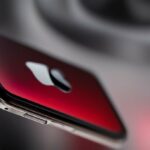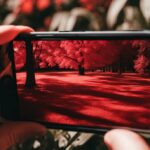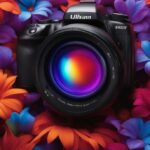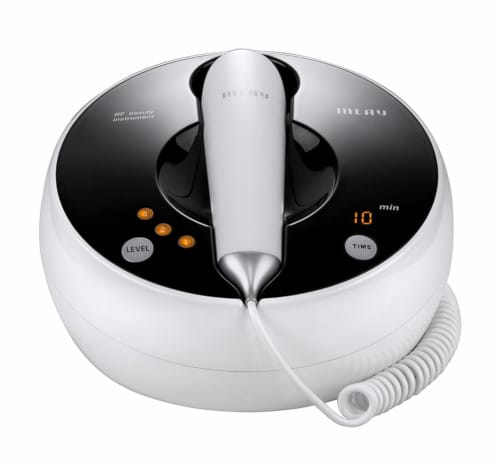Last Updated on 6 months by Francis
Are iPhones secretly capturing infrared pictures of you? This question has sparked a wave of concern among iPhone users, raising issues of privacy and security. In this article, we delve into the truth behind iPhones and infrared photography, shedding light on the technology and addressing the controversies surrounding it.
Contents
Key Takeaways:
- iPhones capture invisible infrared images every five seconds for Face ID purposes.
- The TrueDepth camera system on iPhones uses infrared technology to create a mathematical representation of the user’s face.
- Infrared photos are not visible to the human eye and serve solely for authentication.
- Users have the option to disable Face ID and the use of infrared photos for privacy concerns.
- The controversy surrounding infrared photos emphasizes the need for privacy and security in mobile devices.
How Apple’s iPhone Takes Invisible Photos

The recent TikTok sensation by Brie Thomason shed light on a fascinating feature of iPhones—the ability to capture invisible infrared photos. This discovery sparked concerns about privacy and security among iPhone users, who were unaware of their devices constantly taking photos. How exactly does Apple’s iPhone capture these invisible photos, and what is the purpose behind it?
Apple responded to the concerns, explaining that the infrared photos are part of the Face ID feature. iPhones use the TrueDepth camera system, equipped with an infrared emitter, an infrared camera, and a flood illuminator, to capture and analyze the user’s face. This process creates a mathematical representation of the face, which is encrypted and used exclusively for authentication purposes.
The iPhone’s TrueDepth camera projects over 30,000 invisible dots onto the face, enabling precise facial recognition. These invisible photos are taken every five to ten seconds, even when the camera is blocked or the screen is locked. While this revelation initially raised privacy and security issues, Apple assures users that their facial data is highly protected and the TrueDepth camera system is secure.
Clarifying Infrared Camera Technology on iPhones

The infrared camera technology on iPhones, particularly the TrueDepth camera, plays a crucial role in capturing infrared images for Face ID. This advanced technology utilizes an infrared emitter, an infrared camera, and a flood illuminator to emit infrared dots and generate a precise and detailed 3D map of the user’s face. By projecting and analyzing over 30,000 invisible dots, the camera converts the facial information into a mathematical representation that is used for authentication purposes.
This innovative infrared camera system not only enables secure facial recognition but also enhances the user experience. For instance, it allows the iPhone to detect when the device is actively being used, enabling features such as auto-dimming of the screen for power-saving purposes. It’s worth noting that users have the option to disable attention-aware features in the Face ID settings if they prefer not to utilize this specific functionality.
For those interested in exploring the exciting realm of infrared photography with their iPhones, there are various apps and tips available. These apps leverage the infrared capabilities of the iPhone’s camera, allowing users to capture unique and ethereal images that are not visible to the naked eye. Whether it’s capturing stunning landscapes or experimenting with creative compositions, infrared photography on iPhones presents a world of possibilities for photography enthusiasts.
“Infrared photography allows us to see the world in a whole new light, revealing a hidden beauty that is often overlooked. With the infrared capabilities of iPhones, anyone can unlock their creative potential and explore the fascinating realm of infrared photography.” – Photography expert
| Benefits of Infrared Photography on iPhones | Tips for Capturing Striking Infrared Photos |
|---|---|
|
|
Unlocking the full potential of infrared photography on iPhones requires a combination of technical knowledge and creative vision. By understanding the underlying infrared camera technology and exploring the available apps and techniques, users can embark on a captivating journey into the world of infrared photography, capturing breathtaking images that push the boundaries of traditional photography.
Understanding the Controversy around iPhone Infrared Photos

The discovery of iPhones capturing infrared photos has sparked controversy and raised concerns among users regarding privacy and security. Many users were unaware that their iPhones were constantly taking these photos, which led to fears of invasion of privacy. However, it is important to understand the purpose and limitations of these infrared photos to alleviate these concerns.
Firstly, it is crucial to note that the infrared photos captured by iPhones are not visible to the human eye. They are specifically used for the Face ID feature, which creates a mathematical representation of the user’s face to ensure secure authentication. These photos are encrypted and protected, with Apple emphasizing the safety of the TrueDepth camera system.
While the constant capturing of infrared photos may raise eyebrows, it is essential to bear in mind that these photos serve a specific function for Face ID and are not used for spying or data collection purposes. Users who are uncomfortable with this feature can easily disable Face ID and prevent their iPhones from capturing infrared photos by adjusting their device settings.
| Myths About iPhone Infrared Photos | Reality |
|---|---|
| iPhone infrared photos are a form of spying | These photos are solely used for Face ID authentication and are not a means of invasion of privacy. |
| Users have no control over the capturing of infrared photos | Users can easily disable the Face ID feature and prevent their iPhones from taking these photos. |
| Infrared photos pose a risk to user privacy and security | Apple ensures that these photos are encrypted and protected, with the TrueDepth camera system being safe to use. |
It is crucial to understand that the infrared photos captured by iPhones are not a means of invasion of privacy. These photos are used exclusively for Face ID authentication and are encrypted to protect user data.
iPhone Infrared Photography Tips
While the controversy around iPhone infrared photos may persist, it is essential to explore the potential creative uses of this technology. Here are some tips for those interested in experimenting with infrared photography on their iPhones:
- Use third-party apps: There are various apps available on the App Store that allow users to capture and edit infrared photos. These apps often provide additional features and effects to enhance the infrared photography experience.
- Experiment with different lighting conditions: Infrared photography can produce unique and striking results in various lighting conditions. Try shooting during different times of the day and in different environments to discover the most visually appealing infrared photos.
- Consider using external filters: External filters specifically designed for infrared photography can further enhance the quality of your photos. These filters block visible light while allowing infrared light to pass through, resulting in more vibrant and dramatic infrared images.
- Edit and enhance: After capturing infrared photos, take advantage of editing tools and apps to further enhance the visual impact. Adjusting contrast, saturation, and other settings can help bring out the unique qualities of your infrared shots.
By understanding the purpose and limitations of iPhone infrared photos, users can make informed decisions regarding their privacy and explore the creative possibilities offered by this technology.
Debunking Misconceptions about iPhone Infrared Photos
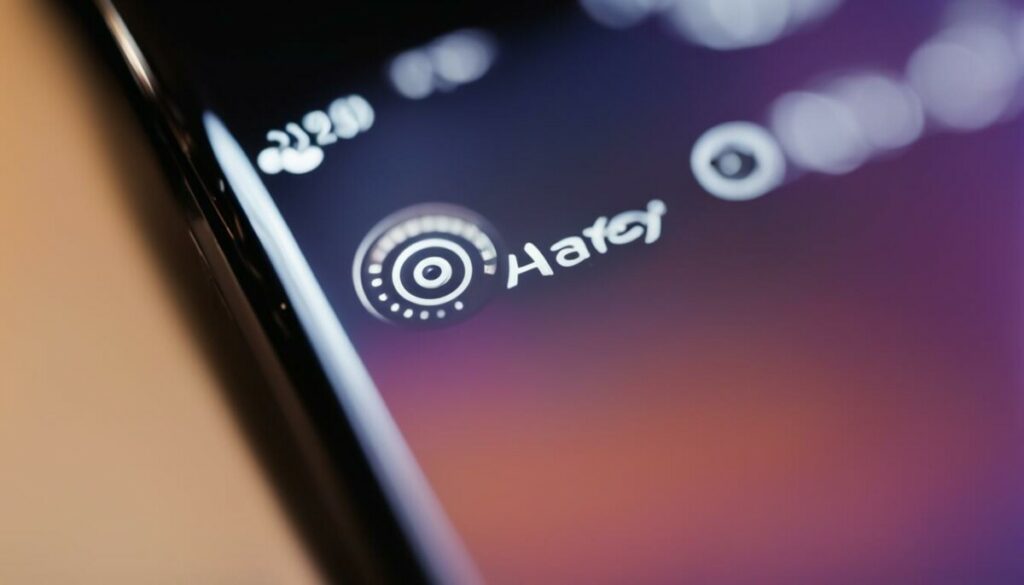
There has been a lot of confusion and concern surrounding the use of infrared photos on iPhones. Many users worry about their privacy and question the purpose of these photos. It’s important to understand that while iPhones do capture infrared photos for Face ID, these photos are not visible to the human eye. They are solely used for authentication purposes and do not involve any form of spying or invasion of privacy.
Apple’s TrueDepth camera system utilizes infrared technology to create a detailed facial map of the user for secure authentication. This technology has been designed with privacy and security in mind. The facial data captured is encrypted and protected, ensuring that it remains secure and cannot be accessed by unauthorized individuals.
For users who may have concerns or simply prefer not to use Face ID, disabling the feature is a straightforward process. By accessing the “Settings” menu and navigating to “Face ID & Passcode,” users can easily turn off the “iPhone Unlock” or “iPad Unlock” option, effectively disabling Face ID and preventing their iPhones from capturing infrared photos.
Top Tips for Infrared Photography on iPhones
- Experiment with different lighting conditions: Infrared photography can produce stunning and unique results, especially when capturing landscapes and nature. Try shooting during different times of the day to explore the diverse effects that infrared light can create.
- Utilize infrared photography apps: There are several apps available that can enhance and optimize your infrared photography experience on iPhones. These apps provide additional features and filters specifically tailored for infrared photography, allowing you to further customize your images.
- Consider post-processing options: After capturing your infrared photos, you can further enhance them through post-processing techniques. Experiment with different editing tools and software to achieve the desired effects and bring out the full potential of your images.
By debunking the misconceptions surrounding iPhone infrared photos and understanding the technology behind it, users can make informed decisions about their privacy and utilize the features that best suit their needs.
| Myth | Reality |
|---|---|
| iPhone infrared photos are visible to the human eye | Infrared photos are not visible and serve only for authentication purposes |
| iPhone infrared photos are a form of spying | Infrared photos are encrypted and used exclusively for Face ID |
| iPhone infrared photos invade privacy | Users have the option to disable Face ID and infrared photos |
In conclusion, iPhone infrared photos are a crucial component of the Face ID feature, providing users with enhanced security and privacy. By understanding the technology and following the provided tips, users can confidently utilize their iPhones for captivating infrared photography while maintaining control over their privacy settings.
How to Disable Face ID and Infrared Photos on iPhones
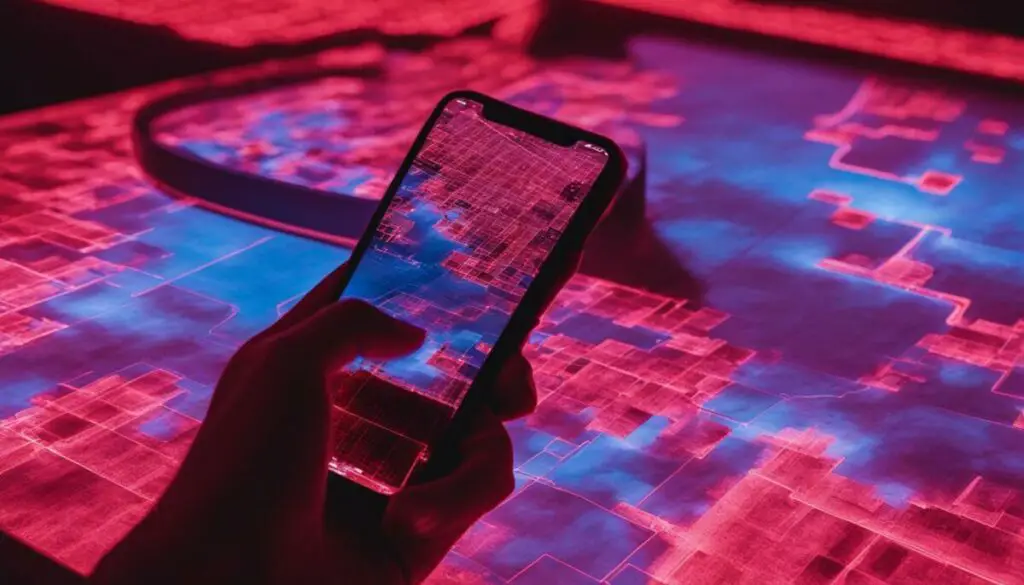
If you are concerned about the privacy implications of Face ID and the capture of infrared photos on your iPhone, you have the option to disable these features. Here’s a step-by-step guide on how to do it:
Disabling Face ID:
- Go to the Settings app on your iPhone.
- Scroll down and select “Face ID & Passcode”.
- Enter your passcode to access the Face ID settings.
- Toggle off the “iPhone Unlock” or “iPad Unlock” option to disable Face ID.
- You can also toggle off other options like “iTunes & App Store” or “Apple Pay” if you no longer want to use Face ID for these services.
Disabling Infrared Photos:
- Open the Settings app on your iPhone.
- Scroll down and tap on “Privacy”.
- Select “Camera” from the list of options.
- You’ll see a list of apps that have access to your camera. Toggle off the apps that you want to prevent from capturing infrared photos.
By following these steps, you can easily disable Face ID and prevent your iPhone from capturing infrared photos. Keep in mind that disabling Face ID will require you to use an alternative authentication method, such as a passcode, when unlocking your device or accessing certain apps. Additionally, disabling infrared photos for specific apps may limit their functionality, so consider the implications before making any changes.
It’s important to note that these features exist to enhance the security and convenience of using your iPhone. However, individual preferences regarding privacy may vary, and it’s up to each user to decide whether or not to enable these features. By providing the option to disable Face ID and infrared photos, Apple allows users to tailor their iPhone experience to their own needs and concerns.
The Importance of Privacy and Security in Apple’s iPhone
The discovery of iPhones capturing infrared photos highlights the significance of privacy and security in mobile devices. As technology advances, smartphones increasingly play a crucial role in our daily lives, storing personal information and sensitive data. This raises concerns about the extent of data collection and its potential misuse, emphasizing the need for robust security measures.
Apple’s iPhone, with its advanced camera capabilities including infrared technology, exemplifies the importance of prioritizing user privacy. While Apple assures users that their facial data is encrypted and protected, the controversy surrounding the infrared photos has raised questions about the potential invasion of privacy.
It is essential for smartphone manufacturers to acknowledge these concerns and implement stringent privacy and security measures. This ensures that user data remains confidential and protected from unauthorized access or misuse. By prioritizing privacy, smartphone companies can build trust with their users and provide a secure ecosystem for their personal information.
Exploring the Future of Infrared Technology on iPhones
As technology continues to advance, iPhones and other smartphones are constantly evolving their imaging capabilities. The infrared technology used by iPhones for Face ID is just one example of how smartphone cameras are pushing the boundaries of imaging technology. With each new iteration, Apple introduces improved camera features that enhance user experiences and open up new possibilities for creative photography.
One area where infrared technology may have a future impact is in night photography. Infrared cameras can capture light that is not visible to the human eye, allowing for stunning nighttime shots with enhanced details and unique perspectives. As smartphone cameras continue to improve their low-light performance, the integration of infrared technology could further enhance the ability to capture clear and vibrant images in challenging lighting conditions.
Table: Comparison of iPhone Camera Features
| iPhone Model | Camera Features |
|---|---|
| iPhone X | Dual 12MP cameras with optical image stabilization, Portrait Mode with Depth Control, Smart HDR |
| iPhone 11 | Dual 12MP cameras with Night mode, Ultra Wide camera, Deep Fusion, Smart HDR |
| iPhone 12 Pro | Triple 12MP cameras with Night mode, LiDAR Scanner, ProRAW, Dolby Vision HDR |
In addition to night photography, infrared technology could also have applications in other areas such as augmented reality (AR). By combining infrared sensors with advanced AR capabilities, future iPhones may offer immersive experiences that seamlessly blend the real and virtual worlds.
While the exact future of infrared technology on iPhones remains to be seen, it is clear that camera features will continue to be a focal point for smartphone innovation. As users demand increasingly advanced imaging capabilities, smartphone manufacturers like Apple will continue to push the boundaries of what is possible, providing users with new ways to capture and create stunning visual content.
Conclusion
In conclusion, iPhones do possess the capability to capture infrared photos every five seconds as part of the Face ID feature. However, it is essential to understand that these photos are not visible to the human eye and are solely used for authentication purposes. Apple’s TrueDepth camera system employs infrared technology to create a precise facial map, ensuring the security of user data.
For users who prioritize privacy, there is an option to disable Face ID and the usage of infrared photos. By navigating to the “Settings” menu, accessing “Face ID & Passcode,” and toggling off the “iPhone Unlock” or “iPad Unlock” option, users can confidently customize their iPhone settings according to their personal preferences.
While it is crucial to address concerns surrounding privacy and security, it is also important to comprehend the underlying technology behind these features. By being informed and aware, users can make educated decisions about their device usage and take advantage of the iPhone’s incredible imaging capabilities, including the potential for exploring infrared photography. Various apps and resources are available for those interested in delving into this unique form of photography with their iPhones.
Looking ahead, the utilization of infrared technology in iPhones for Face ID sets the stage for further innovation in smartphone imaging. As technology continues to progress, future iterations of iPhones and other smartphones may introduce even more advanced camera features, providing users with a wider range of photography options and enhancing their overall experience with their devices.
FAQ
Do iPhones capture infrared pictures?
Yes, iPhones capture infrared images of the user’s face every five seconds for Face ID purposes.
Are these infrared photos visible to the human eye?
No, the infrared photos captured by iPhones are not visible to the human eye.
What is the purpose of capturing infrared photos?
The infrared photos are used to create a facial map for authentication in the Face ID feature.
Can I disable Face ID and the use of infrared photos on my iPhone?
Yes, you can disable Face ID and the use of infrared photos by navigating to the “Face ID & Passcode” settings and toggling off the “iPhone Unlock” or “iPad Unlock” option.
Are the infrared photos encrypted and protected?
Yes, Apple assures users that the facial data captured in the infrared photos is encrypted and protected.
Is the infrared camera technology safe to use?
Yes, Apple states that the infrared camera technology used in iPhones is safe to use and does not harm the eyes or skin.
What should I do if I have concerns about privacy and security?
If you have concerns about privacy and security, you can disable Face ID and the use of infrared photos on your iPhone or choose not to use these features.
Can I use infrared photography with my iPhone?
Yes, there are various apps and tips available for those interested in exploring infrared photography with their iPhones.
What are the future implications of infrared technology on iPhones?
The future of infrared technology on iPhones holds potential for additional features and capabilities in smartphone imaging, expanding possibilities for creative photography and enhancing user experiences.
Source Links
- https://www.itechpost.com/articles/105677/20210518/iphone-spying-taking-invisible-photos-disable-face-id-infrared-camera.htm
- https://www.abc4.com/news/tech-social-media/yes-your-iphone-is-taking-invisible-pictures-of-you/
- https://www.the-sun.com/tech/8512678/iphones-take-photos-face-every-five-seconds/


